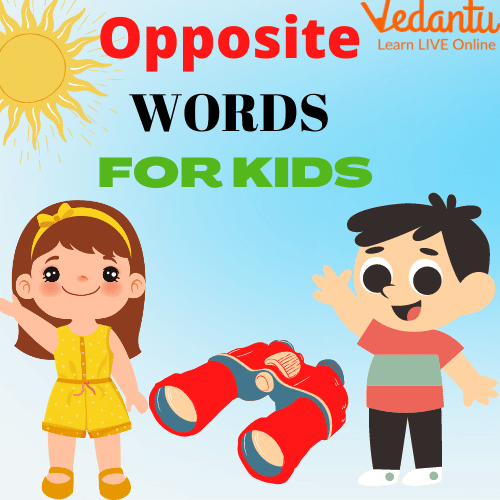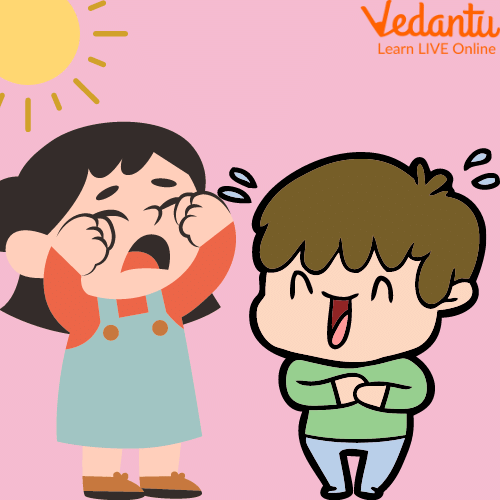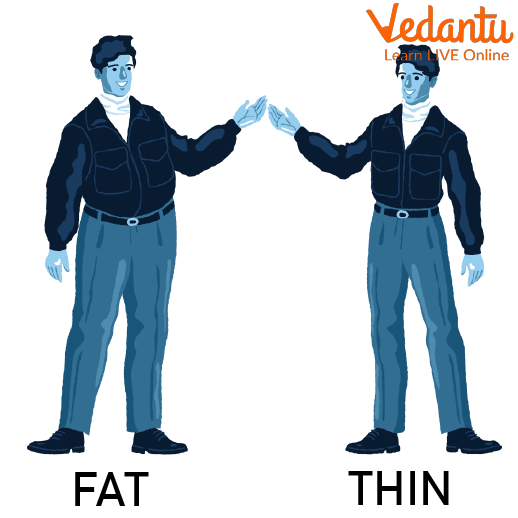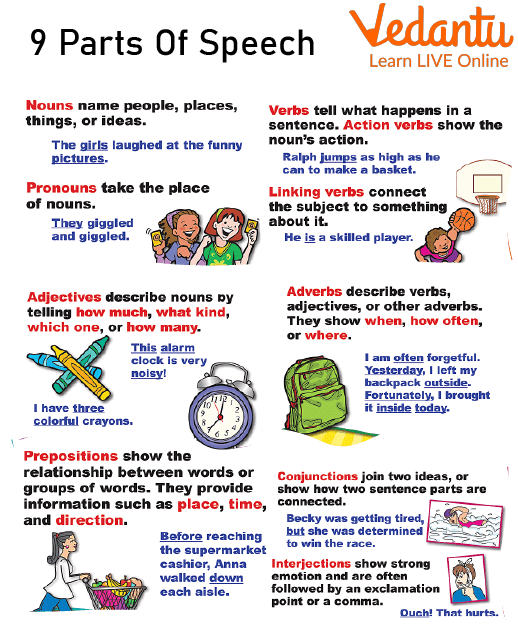




Look Into Opposite Words for Class 3
Opposite words are an important part of learning English. Without them, we wouldn't understand the difference between "hot" and "cold." We start learning opposite words and their significance while we are in kindergarten. Let’s start learning more about opposites in the kindergarten setting.

Introduction to Opposite Words for Class 3
Opposites rank first on the list of fundamental concepts for kindergarteners. Word pairings that directly oppose or contrast each other are referred to as opposites. "Soft" is the opposite of "hard," for instance.
You could show kindergarten students a soft rabbit and a hard rock to illustrate this. The tactile and visual learning that comes from handling the two will greatly advance comprehension. Students can learn about opposite words in English Class 4 from pictorial books as well.
Opposite Words for Class 3:

Opposite Words for Class 3
Children learn how to compare and contrast different objects by using opposites in their descriptions. For kindergarteners, this is essential for learning and understanding language.
You can engage in a variety of activities with your kids or students to teach them about opposites. With the internet at your disposal, there is always a method to search for videos, download free software, or read articles that offer excellent suggestions for creating your contrasts to kindergarten activities. Try kindergarten sight words for more reading entertainment. Students can go through the opposite words worksheet for class 3 to get detail on what is the opposite word and the lists.
What is the Opposite Word?
Opposite words are also referred to as antonyms. Words have their own contrasting words, known as opposite words. Opposite words are part of grammar in which students teach opposite words. The teacher can use many tools to teach students opposite words like matching activity, picture activity, fill in the blank activity, etc.

Opposite Words in English for Class 3
These words are the reverse of some other words, such as black and white or love and hate. Two words that have opposite meanings are called opposite words.
You can use this sentence as an example "Lana loves to study outside" then you could say "Lana hates studying inside" to understand how opposite words work. This is because both these sentences have opposite words in them; "outside" and "inside.
Letter Wise Opposite Words
A-Letter:
above - below
asleep - awake
Ally - Enemy
B-Letter:
bad - good
back - in front of
big - small
C-Letter:
cold - hot
calm - angry
Careful - careless
D-Letter:
dry - wet
deep - shallow
dark - light
E- Letter:
empty - full
Enemy - friend
F- Letter:
fat - thin
fancy - plain
fix - break
10 Opposite Words for Class 3
Talkative - Quiet
Punctual - Late
Generous - Selfish
Optimistic - Pessimistic
Reliable - Unreliable
Funny - Serious
Friendly - Unfriendly
Obedient - Disobedient
Good - Bad
Happy - Sad
Opposite Words Worksheet for Class 3
Solve the given opposite words worksheet for Class 3 by writing the opposites of underlined words below:
Tom is an angry bird. He likes to shout at other birds. He does not like anyone. One day he found his old friend. He shouted at him. The friend started crying, due to his crying other birds also came and shouted at Tom that day Tom realised how bad he was shouting at others.
Answer: Tom is calm bird. He dislikes shouting at other birds. He does not dislike anyone. One day he found his new friend. He shouted at him. The friend started crying, and due to his crying other birds also came and shouted at Tom that day Tom realised how bad is shouting at others.
The opposite of anger is calm, likes are dislikes, and old is new.
English Grammar for Class 3

Parts of Speech
Grammar is the building block of any language. It helps to learn and understand the language. The set of structural principles governing the English language is known as English grammar. This encompasses the organisation of individual words, phrases, clauses, sentences, and texts as a whole. Here we are sharing some parts of the grammar for Class 3 students.
Sentence
Words that make complete sense are called sentences.
Part of a sentence: A sentence can be divided into two parts. One is the subject, another is the predicate.
Example: Ram is going to England. In this sentence, Ram is a subject and going to England is a predicate part.
The subject is a part about which sentence is, and the predicate tells what the subject is doing.
Pronouns
Pronouns are the words that we can use in place of a noun. For example, in “Rina is playing” we can replace Reena, a noun, with a suitable pronoun and rephrase the sentence as “She is playing”.
Other Parts of Speech
An adjective is a word used to show the state or quality of the noun and pronouns. Example: Shiya is a tall girl, in this sentence, tall is an adjective. He is a good boy, in this sentence, good is an adjective.
The verb is a part of a sentence that indicates the subject's activity and is called a verb. Example: Rohan is singing, here in the sentence Ram is a subject and he is singing, so the verb in the sentence is singing.
In sentences, words that define nouns are called determiners. Articles demonstrative, quantified and possessives are an example of determiners.
Summary
Opposite words are part of grammar in which students learn contrasting words. These words are also known as antonyms. The set of structural principles governing the English language is known as English grammar. There are nine parts of speech in grammar: noun, pronoun, adjective, adverb, verb, determiner, preposition, conjunction and interjection.
With the help of grammar knowledge, you can easily divide them and identify them in a sentence. For writing or speaking any language you need to know the grammar of that language. Opposite words are one of the grammar activities. The teacher can use many tools to teach students opposite words like matching activity, picture activity, fill in the blank activity, etc.
FAQs on Opposite Words for Class 3: A Fun Guide to Learning Antonyms
1. What is the other name for the opposite words? Give the opposite word for “opposite”
The other name for the opposite words is antonyms. The opposite of an antonym is a synonym.
2. What is the use of teaching opposite words in Class 3?
Teaching opposite words in Class 3 is advantageous for kids since it makes learning figures of speech like oxymorons and antithesis easier in higher classes.
3. Write 10 opposite words.
Ten opposite words include dark-light, black-white, day-night, dry-wet, above-below, happiness-sadness, up-down, move-stop, right-wrong, and true-false.
4. What is the difference between a noun and a pronoun?
Nouns represent things that exist out there in the world: bridges, rivers, persons (as in my friend). A pronoun is a word or phrase that substitutes for a noun, such as "I", "she", or "he". Some words also have both meanings—for example, the word "book" can be used in its noun sense to refer to a physical object, but if someone says that they are going to buy some books, then it is being used as a pronoun.
5. How can one teach the opposite?
After giving pupils a concept word (such as heavy or light, on or off), ask them to circle the room and find the opposite word. Ask pupils to compose or tell a ridiculous story that contains as many opposites as they can. To locate the opposing word pairs in games like Go Fish and Memory Match, use the "Opposites" cards. It is crucial because it teaches kids how to compare various things and helps them have a clearer understanding of a certain idea (e.g. hard vs soft).
6. What are some opposite words and why is it important to study?
Here are some of the opposite words-
Hot-cold
Up-down
Happy-sad
In-out
Friend-foe
Good-bad
Truth-lie
Right-wrong
Tall-short
Love-hate
Sharp-blunt
War-peace
Artificial- natural
Narrow-wide
Adult-child
Asleep-awake
Ask-reply
Visible- Invisible
sunny-cloudy
Opposite words are important to study as learning new vocabulary is made easier by pairing opposing words. When pupils are shown a word's antonym, it makes it much simpler for them to understand what the word means. For example, when stated as "tall/short," the meaning of the word "tall" is much simpler to understand. Images are a great tool for teaching opposites.
7. Which animal is fast and who is slow?
The rabbit is fast and the turtle is slow.









